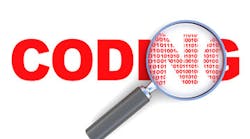D3450—Root amputation, per root
After reading this article, you will understand when to bill for a root amputation and how to successfully code for the procedure being performed. Let's start by understanding the CDT description, which defines the use and purpose.
According to the CDT, a root amputation is considered an endodontic procedure in which removal of a single root is performed. Root(s) of the same tooth will remain in the patient's dentition even after the procedure is completed. This code is typically reported for a multi-rooted tooth, i.e., posterior molar.
Let’s discuss limitations and reasons for denial
• If an apicoectomy is performed in addition to the root amputation, reimbursement is limited to only one procedure, not both.
• If you bill an extraction in addition to the root amputation, reimbursement is limited to one procedure, not both, and it's usually the lesser fee that will be paid.
• Additional roots and teeth should always be reported separately.
• Ridge augmentation and bonegraft preservation should be reported separately.
Common coding errors
• Providing pre- and post-op x-rays.
• Failing to provide reasons of necessity.
• Failing to provide periodontal charting and a full set of x-fays within the last six months.
It is always recommended that you preauthorize dental treatment to ensure coverage.
RECENT DENTAL CODING WITH KYLE
What code to use for dental exam visit?
D1110–Prophylaxis vs. D4910–Periodontal maintenance
D4249–clinical crown lengthening







